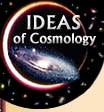
|
|
 |
Newtonian
Cosmology and Religion |

|
|
| In the absence of large telescopes and revealing observations of distant stars, philosophical and theological speculations dominated eighteenth-century cosmology. This situation began to change after the English astronomer William Herschel proposed a cosmological model rooted in observations. From the 1780s onward, the heavens, penetrated by Herschel's large telescopes, increasingly were understood as an expansive three-dimensional structure. The supposed need for divine intervention also diminished as astronomers during the 18th century solved problems of celestial mechanics. In 1786, for example, the French mathematician and astronomer Pierre-Simon Laplace demonstrated that the gravitational interactions of Jupiter and Saturn were self-correcting. Efforts such as these were an attempt to replace the hypothesis of God's rule with a purely physical theory to explain the observed order of the universe. Laplace's attempt to replace the hypothesis of God's rule with a purely physical theory to explain the observed order of the universe reflected the French Enlightenment's atheistic approach to nature. Laplace was successful, at least in his own mind. According to legend, when Napoleon asked him whether he had left any place for the Creator, Laplace replied that he had no need of such a hypothesis. Separation of God from the physical universe may have been inevitable with the rise of modern cosmology, no matter how much Newton and others were convinced that their discoveries illustrated God's presence and power. Instead, science came to be seen by many people as a rival to religion, as the authority to which people turned for inspiration, direction, and criteria of truth. |
|
Copyright ©. Brought to you by the Center for History of Physics, a Division of the American Institute of Physics |
|
|||||